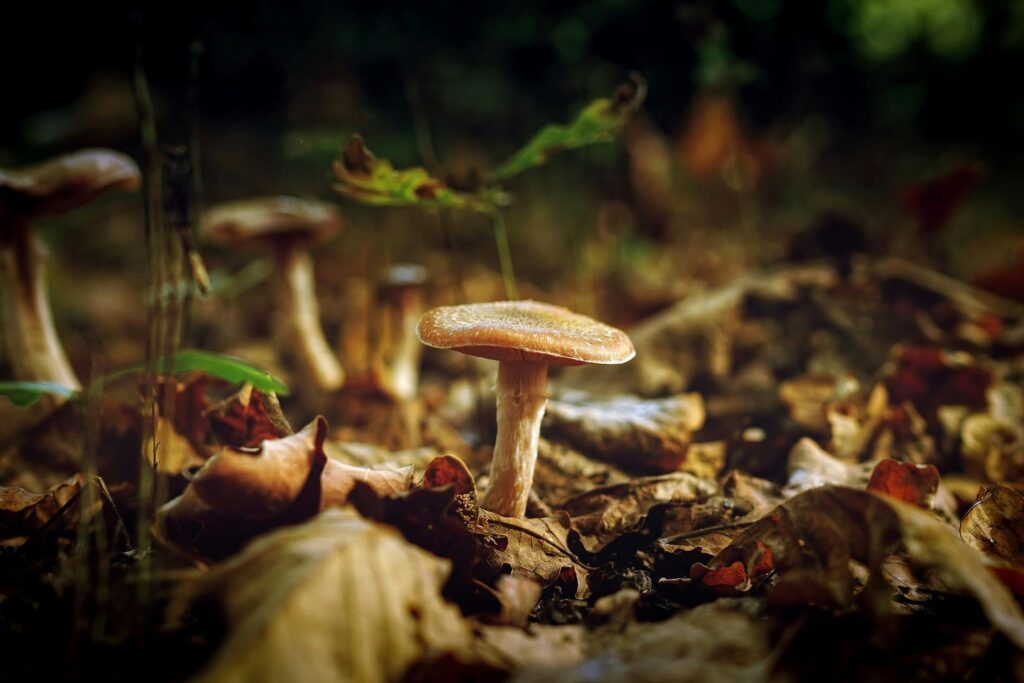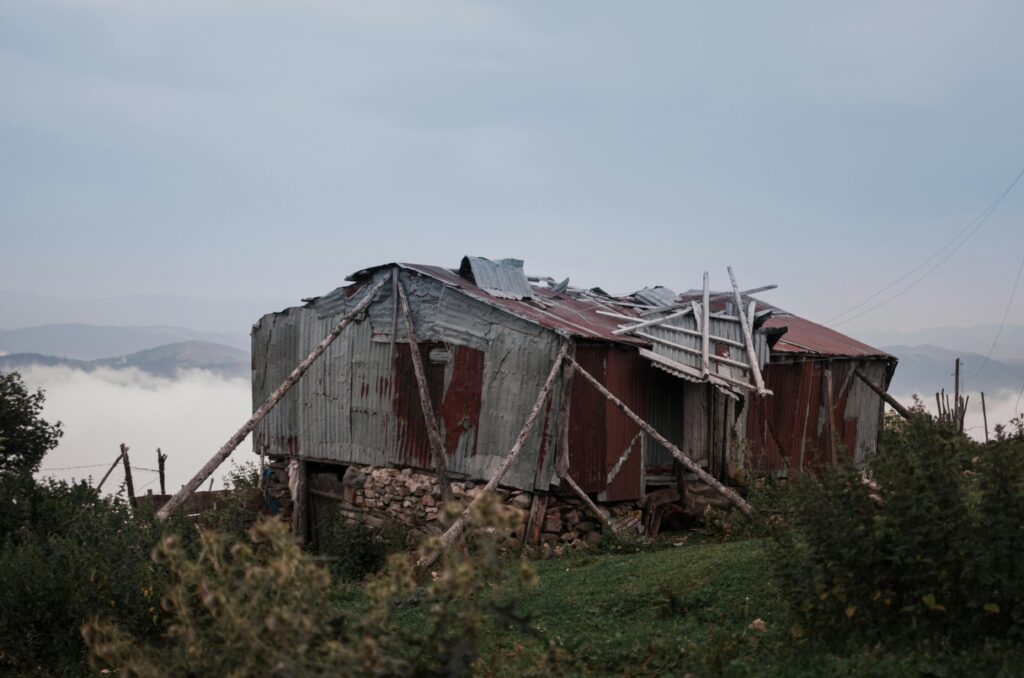DECOMPOSITION

Decomposition may be defined as a process by which the complex organic body tissue breaks down to simpler inorganic compounds or elements, due to the action of ferments produced by saprophytic bacteria or autolysis.
Forensic decomposition analysis
Ordinary—Putrefaction
Modified—Mummification
Saponification (Adipocere formation)
External—Bacteria— Streptococci, Staphylococci, Proteus, E.Coli, Bacillus,Clostridium etc. Fungi–Penicillium, Aspergillus etc.
PROCESS OF DECOMPOSITION:
AUTOLYSIS:
Soon after death, cell membrane breaks down and become permeable which causes release of various cytoplasmic contents particularly lysosomes. Lysosomal membrane also becomes abnormally permeable to water causing rupture of the membrane & releases all the lysosomal enzymes. The proteolytic, glycolytic & lypolytic action of these enzymes leads to autodigestion and disintegration of tissues & organs, which is known as Autolysis
*The chief destructive bacterial agent is Cl. Welchii.
STAGES OF PUTREFACTION:
- Discoloration of skin & tissue
- Evolution of foul smell
- Appearance of maggots
- Colliquative liquefaction
- Skeletonization
Color changes:
- Reddish brown to greenish black to dusky black
- Due to Hb-compound product + H2S >> Sulphmethaemoglobin
- First appears- externally: skin over the caecum (rt. iliac fossa)
internally: undersurface of the liver
Timing of appearance – in summer : 06 to 12 hours
in winter : 24 to 48 hours
Marbling- the superficial veins over the root of the upper limbs, neck, chest, & abdomen are stained with greenish brown discoloration due to haemolysis giving marble like appearance after 36 to 48 hours.
Foul Smelling:
- Compounds responsible are aminoacids, ammonia, CO2, H2S, CO, HPO4, CH4 etc.
- Time—12 to 24 hours- in abdominal cavity
24 to 48 hours -in other tissues
48 to 72 hours-causes prolapse/hair falls
- Collection of these gases causes multiple effects which have some M/L importance-
PM bleeding from mouth & nostrils
bloating of the face, lips, eyelids etc.
tongue swollen & protruded
body emphysema
gas blisters
breasts, penis, scrotum, labia are greatly distended
PM oozing from wounds
prolapse of uterus & PM parturition
prolapse of rectum
Appearance of Maggots:
- 03 types of fly- green bottle, blue bottle, house fly
- Place of egging- nasal or oral orifices, axillae, canthi of eyes, ears, groin etc.
- Life cycle— Eggs (8 to10 hrs) >>>Hatching (after 12 hrs) >>> 1st instar (after12 hrs) >>>2nd instar (2 to 3 days) >>>3rd instar (6 days) >> Pupa (7 to 8 days) >> Adult fly(10 days)
Colliquative Liquefaction
- Abdomen burst
- Tissue becomes soft, loose, semifluid black mass
- Fallen from skeleton
- Oils are formed
DECOMPOSITION IN WATER Air : Water : Burial = 08 : 02 : 01
Factor influencing
- Season
- Water temperature
- Quality of water
- Stagnancy of water
- Aquatic animals
Floatation
- In summer—24 to 36 hrs
- In winter—48 to 72 hrs
ORDER OF PUTREFACTION (how to estimate time of death)
Organs Starts summer Starts winter
1. Larynx & Pharynx 12 to 24 hrs 02 to 03 days
2. Stomach & Intestines 24 to 36 hrs 03 to 05 days
3. Spleen Do
4. Liver 01 to 02 days 03 to 05 days
5. Lungs Do
6. Brain
7. Kidneys & Bladder
8. Heart
9. Prostate
10. Non-gravid Uterus
11. Muscles & Skin
12. Tendons
25. Bones 25 to 30 yr.
Decomposition Reactions
In forensic science, decomposition reactions—chemical or biological breakdown of matter—play a critical role in determining the postmortem interval (PMI), identifying causes of death, and analyzing crime scene evidence. Unlike simple chemical decomposition (e.g., hydrogen peroxide breaking into water and oxygen), forensic decomposition involves complex biochemical processes influenced by environmental and physiological factors.
Types of Decomposition in Forensics
1. Autolysis (Self-Digestion)
- Process: Cells break down due to enzyme release after death.
- Forensic Importance: Helps estimate early PMI (0–48 hours).
- Visual Indicators: Skin slippage, blister formation.
2. Putrefaction (Bacterial Action)
- Process: Gut bacteria spread, producing gases (e.g., methane, hydrogen sulfide) and compounds like putrescine & cadaverine.
- Forensic Importance:
- Odor detection (canine units or electronic sensors).
- Bloating, marbling veins, green discoloration (timeline clues).
3. Advanced Decay & Skeletonization
- Process: Tissues liquefy, leaving bones and hair.
- Forensic Importance:
- Bone analysis (DNA extraction, trauma assessment).
- Insect activity (forensic entomology pinpoints PMI).
Factors Affecting Decomposition Rate
| Factor | Acceleration | Deceleration |
| Temperature | Faster in heat (e.g., 30°C+) | Slower in cold/freezing |
| Humidity | High moisture speeds decay | Dry/arid conditions mummify |
| Oxygen | Aerobic decay is rapid | Anaerobic (e.g., underwater) slows decay |
| Body Size | Obese bodies decompose faster | Lean bodies take longer |
Forensic Tools for Studying Decomposition
- GC-MS (Gas Chromatography-Mass Spectrometry) – Detects volatile organic compounds (VOCs) from decay.
- Microbial Forensics – Analyzes postmortem microbiome shifts.
- Hyperspectral Imaging – Tracks skin pigment changes.
Case Study: The Role of Decomposition in Solving Crimes
In a 2018 Texas case, forensic experts used blowfly life cycles on a decomposing body to refute a suspect’s alibi, proving the victim died 5 days earlier than claimed.
Conclusion
Decomposition reactions provide a biological clock for forensic investigators. By understanding autolysis, putrefaction, and environmental interactions, experts can unravel time of death, cause of death, and even locate hidden graves.
AQs on Decomposition in Forensic Science
1. What are the stages of human decomposition?
Human decomposition typically follows five stages:
- Fresh (0-3 days): No visible decay; autolysis begins.
- Bloat (3-10 days): Gases build up, causing swelling and odor.
- Active decay (10-20 days): Tissues liquefy; mass loss occurs.
- Advanced decay (20-50 days): Mostly bones and cartilage remain.
- Skeletonization (50+ days): Only bones and hair persist.
2. How does environment affect decomposition?
Temperature, humidity, and access to oxygen play key roles. For example:
- Hot & humid climates: Speed up decomposition (days to weeks).
- Cold/dry climates: Slow decay (months to years).
- Water submersion: Bodies bloat faster but decompose slower than on land.
3. Can insects help estimate time of death?
Yes! Forensic entomologists study insect life cycles (e.g., blowfly larvae) to estimate the postmortem interval (PMI). Different species colonize corpses at predictable stages.
4. Why do some bodies mummify instead of decompose?
Mummification occurs in dry, arid environments or when bacteria can’t thrive (e.g., extreme cold or embalming). It preserves soft tissues by halting microbial activity.
5. How do forensic scientists use decomposition to solve crimes?
By analyzing:
- Decomposition stage to estimate time of death.
- Insect activity for PMI clues.
- Soil chemistry changes under the body.
- Skeletal trauma to identify cause of death.
6. What’s the difference between autolysis and putrefaction?
- Autolysis: Cell breakdown by the body’s own enzymes (no bacteria).
- Putrefaction: Bacterial action causing gas production and odor.
7. Can decomposition be slowed or stopped?
Yes, through:
- Embalming (chemical preservation).
- Freezing (halts microbial growth).
- Peat bogs (natural tanning preserves bodies).

